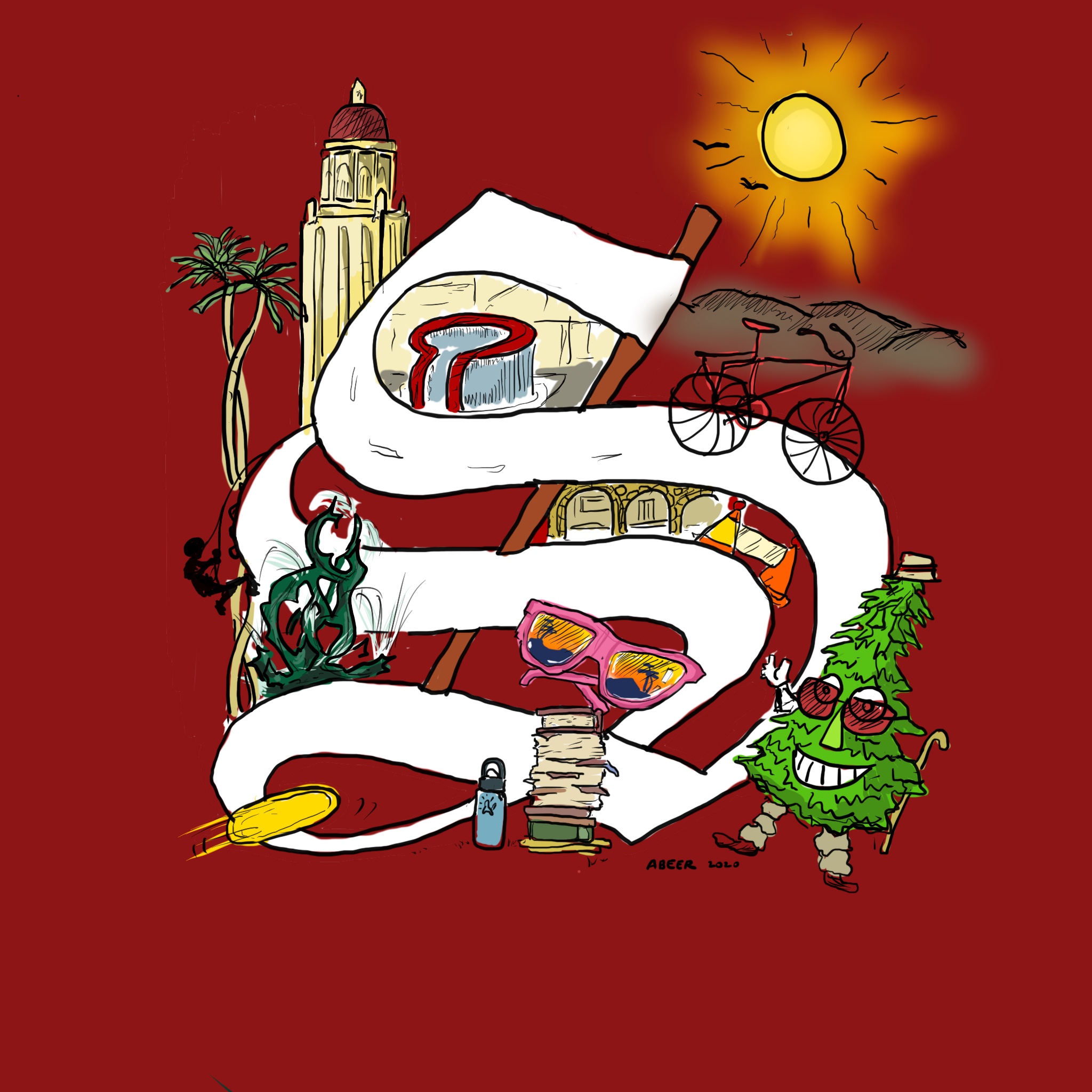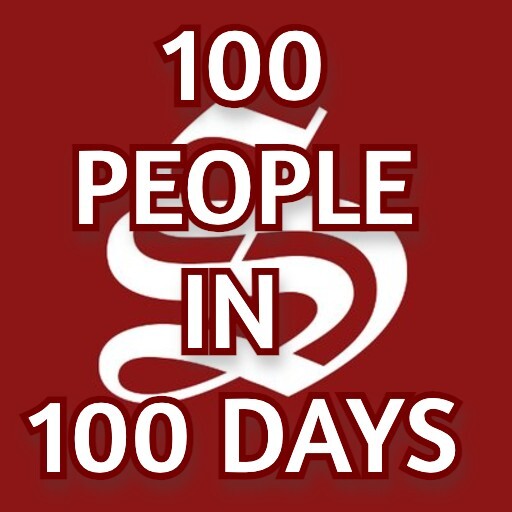
By Nadia Jo, Jared Klegar, Kamilah Arteaga, Young Fenimore Lee and Nick Sligh
Black History Month is an incredible opportunity for everyone living in America to celebrate the achievements of Black people and to learn about key figures and events in Black history. Popular music is undoubtedly a realm in which Black artists have made enormous contributions. Black musicians have revolutionized music and created some of the most brilliant, moving and innovative songs in history.
Several writers in the Music Beat (Grace Adebogun ’24, Kamilah Arteaga ’22, Nadia Jo ’23, Jared Klegar ’24, Peyton Lee ’24, Young Fenimore Lee ’21, Nicholas Sligh ’23) collaborated to write a two-part series highlighting our favorite works by Black musicians. As young music lovers, we wanted to write about the music we know most intimately: albums released in the 2010s. The albums we chose are not the most commercially popular; rather, they are projects with widespread critical acclaim that we also personally love. Many of them also discuss specific challenges Black Americans face, or how their racial identity has shaped their lives and perspectives. They are arranged in chronological order by release date.
Some “big names” might be missing from this list — for example, Kendrick Lamar’s “To Pimp A Butterfly” or Kanye West’s “My Beautiful Dark Twisted Fantasy.” Because the Music Beat has written in the past year about such well-known albums, we decided to pick other works in these famous artists’ discographies. For example, Lee ’21 writes about “good kid, m.A.A.d city” below.
Most of all, this article is a celebration. We want to express admiration for artists who have touched the lives of countless listeners through their songs. It is very likely that you already enjoy works by many Black musicians. We encourage you to reflect on how their creativity has added joy and depth to your lives, and we also encourage you to learn how their identities inform their work.
Check out the Spotify playlist of our favorite songs from these albums.
The ArchAndroid (2010) – Janelle Monáe (Jared Klegar ’24)
Before Janelle Monáe starred in “Hidden Figures,” “Moonlight” and “Antebellum,” she played another role: Cindi Mayweather, messianic android. “The ArchAndroid,” Monáe’s debut studio album, heavily references the 1927 sci-fi movie “Metropolis” through its album art and lyrical themes, following Mayweather as she travels back in time from 2719 to restore peace between androids and humans — that is, “the have-nots and the haves, and the oppressed and the oppressor.” But this narrative, while allegorical, is never didactic, and the music just plain rocks. Monáe traverses so many genres over the course of the album — from the James Brown-influenced funk of “Tightrope” to the pure rock and roll of “Come Alive (War of the Roses).” Yet every track has Monáe’s unmistakable imprint, and all the songs coalesce beautifully into a thematically unified whole. As the final notes of “The ArchAndroid” play and the journey comes to an end, one can’t help but feel that Monáe, too, like her alter ego Mayweather, is timeless and limitless.
“House of Balloons” (2011) – The Weeknd (Nick Sligh ’23)
Truly one of the modern global superstars and icons in music, The Weeknd started his career with a debut mixtape that turned out to be one of the greatest modern R&B projects. It is hard to imagine that the artist who just headlined the 2021 Super Bowl Halftime Show was, at any point, not a superstar, but the first official project of The Weeknd provides an authentic and incredible introduction to an emerging young R&B artist from Toronto. “House of Balloons” perfectly encapsulates what makes The Weeknd such a special artist. Undoubtedly, The Weeknd has been one of the primary innovators in Modern R&B who pushed its sonic boundaries and left it in an incredibly diverse state, and I would argue that his influence on contemporary music is matched by very few people. This project established Abel firmly in his own lane of modern music, with dark, soulful, contemporary R&B that has its own unique sound and authenticity. “The Knowing” is one of the perfect examples of The Weeknd establishing his sound, with an atmospheric instrumental providing the foundation for his emotional vocals and tortured lyrics. Another quintessential Weeknd song is “Wicked Games,” which again perfectly encapsulates some of the most special aspects of his style and provides some of the most high quality modern R&B music. Although the majority of the project holds a dark tone, “The Morning” provides a bright spot, with an incredible feel-good song over a refreshing instrumental. Very few artists are able to create such a strong cinematic presence with just their music, but the feel is present with a psychedelic and electronic buzz being felt throughout the album. The Weeknd showed an obvious mastery of creating incredible and complete projects even as a 21-year-old, which has certainly not left him throughout his career. Very few projects sustain such quality and such an epic and larger-than-life feel to them throughout. Even amongst a high quality discography, The Weeknd’s first mixtape still stands out as arguably his best project he has ever created.
channel ORANGE (2012) – Frank Ocean (Jared Klegar ’24)
On July 4, 2012, a week before he dropped “channel ORANGE,” Frank Ocean took to Tumblr to publish an open letter entitled “thank you’s.” In his poetic message, Ocean recounted the summer of his first love: “I was 19 years old. He was too.” Because Ocean’s declaration of queerness preceded his album’s release, he was able to control his own narrative. Now, when listeners heard songs like “Thinkin Bout You,” “Bad Religion” and “Forrest Gump,” they would be sure that Ocean was addressing male love interests. In a hyper-heteronormative music industry, Ocean helped pave a new path for LGBTQ+ artists. It is a testament to Ocean’s lyricism and musicianship that “channel ORANGE” is both a celebration of queer identity and a universal exploration of unrequited love and class anxiety. Ocean travels to the affluent bubble of Ladera Heights (“Sweet Life”), chronicles the relationship between a drug supplier and his cocaine-cooking girlfriend (“Lost”) and traces the history of the Black woman from the glorification of Cleopatra to the degradation of modern-day sex workers (“Pyramids”). Although these characters differ — and, indeed, no two songs on “channel ORANGE” are quite alike — they are bonded by a need for love, empathy, security. Ocean’s creation thus echoes the opening lines of his seminal Tumblr post: “Whoever you are, wherever you are… I’m starting to think we’re a lot alike. Human beings spinning on blackness.”
good kid, m.A.A.d city (2012) – Kendrick Lamar (Young Fenimore Lee ’21)
This is the album that defined the landscape of 2010s hip-hop music. Of course, three years later, Kendrick would change everything again with yet another career-defining moment via “To Pimp a Butterfly.” But “good kid, m.A.A.d city” was the album that started it all. In a strong lineage of albums that formed the mythology, the semiotic fascination with Compton, California, “good kid, m.A.A.d city” redefined those signs and symbols yet again, creating a foothold in the American consciousness and an eternal reference point for the flooded tragedy of street life. We even saw him as a baby on the cover, man, and his uncles and grandfather, how else could we feel? There isn’t much to say here because of the true ubiquity of songs like “Bitch, Don’t Kill My Vibe” and “Swimming Pools (Drank),” but I’ll take this moment to remember what this album meant to many of us, of this strange generation that needed a heady album erupting with equal parts chaos and contemplation to awaken ourselves to the possibilities of reading rap music closely, the beauty of the stories that lied in wait under rap records everywhere. We just had to turn the record sleeves over and read the lyrics. “good kid, m.A.A.d city” was era-defining, a moment that inspired music listeners everywhere to the complexities of the lives we had not yet investigated, the parts and perspectives that were lurking in cerebrums everywhere but going unspoken, left to not ever be questioned. This was the album that started all of that for us.
1999 (2012) – Joey Bada$$ (Kamilah Arteaga ’22)
A modern 90s classic — that’s what “1999” is today. The nostalgic, “Golden Age” of hip-hop sound of then-17-year-old Joey Bada$$’s first mixtape was the foundation of his musical aura. Though it has an “old school New York” style, “1999” is anything but out of fashion. Bada$$, along with artist collective Pro Era (made up of friends and fellow rappers, including Capital Steez and Kirk Knight), produced songs with gentle, melodic loops and smooth raps to create a classic East Coast boom bap album. This is an album you can play over and over again — new lines and sounds will poke out at you every time, and you’ll appreciate it more and more.
Yeezus (2013) – Kanye West (Nadia Jo ’23)
“Yeezy season approaching, f*ck whatever y’all been hearing,” Kanye West declares in the opening moments of “Yeezus.” The first track, “On Sight,” explodes with electronic glitches threatening to split open eardrums. The extraordinary “Yeezus” brought industrial hip hop to the mainstream, featuring surprising collaborations with musicians like Daft Punk and Gesaffelstein. In so many ways, “Yeezus” cemented West’s position as a true rebel and disruptor in the music industry: the poster child for troublemaking. Adjectives the public would use to describe the sounds in this album — weird, vulgar and abrasive — would later describe Kanye’s erratic persona as well. The tracklist oozes narcissism: Who else would name a song “I am a God” and feature … “God?” Primal sounds also pervade the album, like dog barks in “I’m In It” and panting in the blood-pumping anthem “Black Skinhead.” But “Yeezus” is not all about discomfort. There are moments of breathtaking beauty and talent, like Mike Dean’s guitar solo on “Hold My Liquor” or West’s impassioned rapping on “New Slaves.” On this project, Kanye West desecrates, subverts and stuns. With the comically minimalistic album cover, and the desecration and perversion of our cultural norms, West constantly displays audacity — like his choice to sample “Strange Fruit” in “Blood on the Leaves,” a saga of a relationship’s demise. “Yeezus” remains his most defiant album.
“Cilvia Demo” (2014) – Isaiah Rashad (Nick Sligh ’23)
Chattanooga, Tennessee’s Isaiah Rashad was able to achieve an incredible combination of the best things of the old and new in rap music on his first full-length release with the TDE label. Beyond just the quality of the music, one of the most wonderful things about the album is just the authenticity and honesty in it. Mental health is not frequently addressed in rap, and a young Rashad was not only able to have the courage to address these serious and important issues, but to do so in a way that was beautiful and sincere. What makes the project so substantial and influential is not only the emergence of one of the most talented figures in rap, but a strong push to put mental health issues at the forefront of the genre, and a proof that these topics very much belonged and sometimes can even be the centerpiece of some of the most meaningful music. “Heavenly Father” and “West Savannah” are perfect examples of this on the album. “Heavenly Father” is a double entendre, referencing how both God and Isaiah’s biological father seemed furthest away at his lowest points, increasing the depression and personal issues that he was dealing with. Between the heartfelt chorus and the introspective verses, the song is one of the most powerful and personal songs that can be found by any rapper. “West Savannah” is a simple yet beautiful love song on the album. The themes of depression still carry over and show an encompassing nature in what is probably the most potent line on the song: “At least we fell in love with something greater than debating suicide.” Understandably, “Cilvia Demo” launchd a very cult-like following for Isaiah Rashad, who has shown to be a relatable figure for many and one that is very easy to pull for. Musically, Isaiah Rashad quickly mastered the art of drawing on the nostalgia of old-school hip-hop while infusing his music with his own sound and special southern twist. “Cilvia Demo” exudes soul in every moment, and Rashad’s smooth deliveries and heartfelt writing create a project that feels deeply personal and warm. The struggles of Rashad are so bluntly and emotionally presented that the deeply vulnerable messages of the album immediately endear the young rapper to the listener. Sweet, soulful and personal, Rashad delivered an inspiring compilation with rare intimacy.
LP1 (2014) – FKA twigs (Nadia Jo ’23)
“LP1” established FKA twigs as one of the most unique artists in contemporary music. The simple title masks 10 extraordinary tracks that blend R&B and electronic music, churning out sounds few of us have ever heard before. Despite being her debut album, FKA twigs brings a vision so fully realized and mature that it is difficult to believe this project is not the work of a veteran singer. The production and vocal performance on every song is incredible. FKA twigs’s voice is ethereal, choral and wispy. She reaches climactic highs on the sexual anthem “Two Weeks,” singing unforgettable lines like “I’ll quench your thirst, just chase the high and stop your doubting.” Also incredible is the single “Pendulum,” where an industrial click echoes in between the haunting harmonies. Here, she is melancholy, “wishing my words were enough to consume you.” FKA twigs defies genre labels through her imagination; each song is expansive and detailed enough to be a short film. Even the album cover is visceral and mythical: The hot pink smear on her face can represent blood, blushing or makeup. Whether she wants to express power, vulnerability or loneliness, the agency is in her hands. Originally a dancer, FKA twigs transferred masterful control over her body to her vocal skills. Listening to her sing is like watching a contortionist or acrobat and being completely mesmerized. FKA twigs’s seductive and psychedelic sounds are sure to enthrall music lovers for many years to come.
Atrocity Exhibition (2016) – Danny Brown (Young Fenimore Lee ’21)
“Lines and lines of coke / Heart beating hope it ain’t my time to go.” In a completely unhinged display of true mania, Danny Brown pulls out all the stops and takes us on a journey into the abyss on “Atrocity Exhibition,” with his face on the album cover depicted to resemble certain glitched-out-looking Gerhard Richter paintings. Inspired by Joy Division’s late Ian Curtis, and apparently taking influence from Curtis’s self-destructive downward spiral, Danny contemplates his addictions, his vanity and his nihilism in a stupendous explosion of blaring beats, equally full of sirens, dramatically rounded snares, horns and soft synths chasing Danny’s bars down around the curves of every melody. The crunched horns gliss down, the flanger crushes through the audio, and before you know it, you’re thrust into the centerpiece of the album, “Ain’t it Funny.” Danny is rapping at the speed of sound, with multisyllabic rhymes at every turn, and a persistent sax gust making you think you have tinnitus. Soon enough, you’ll be in sight of “White Lines,” the arena of Danny’s darkest drug-induced fevered pleasure dreams, and before you know it, you’ll be doubting yourself, too, whether you know the difference between the walls you’re feeling with your fingers and the hallucinatory future visions that Danny is bestowing upon your half-shut eyelids. Danny welcomes you to the show. This is an atrocity exhibition.




